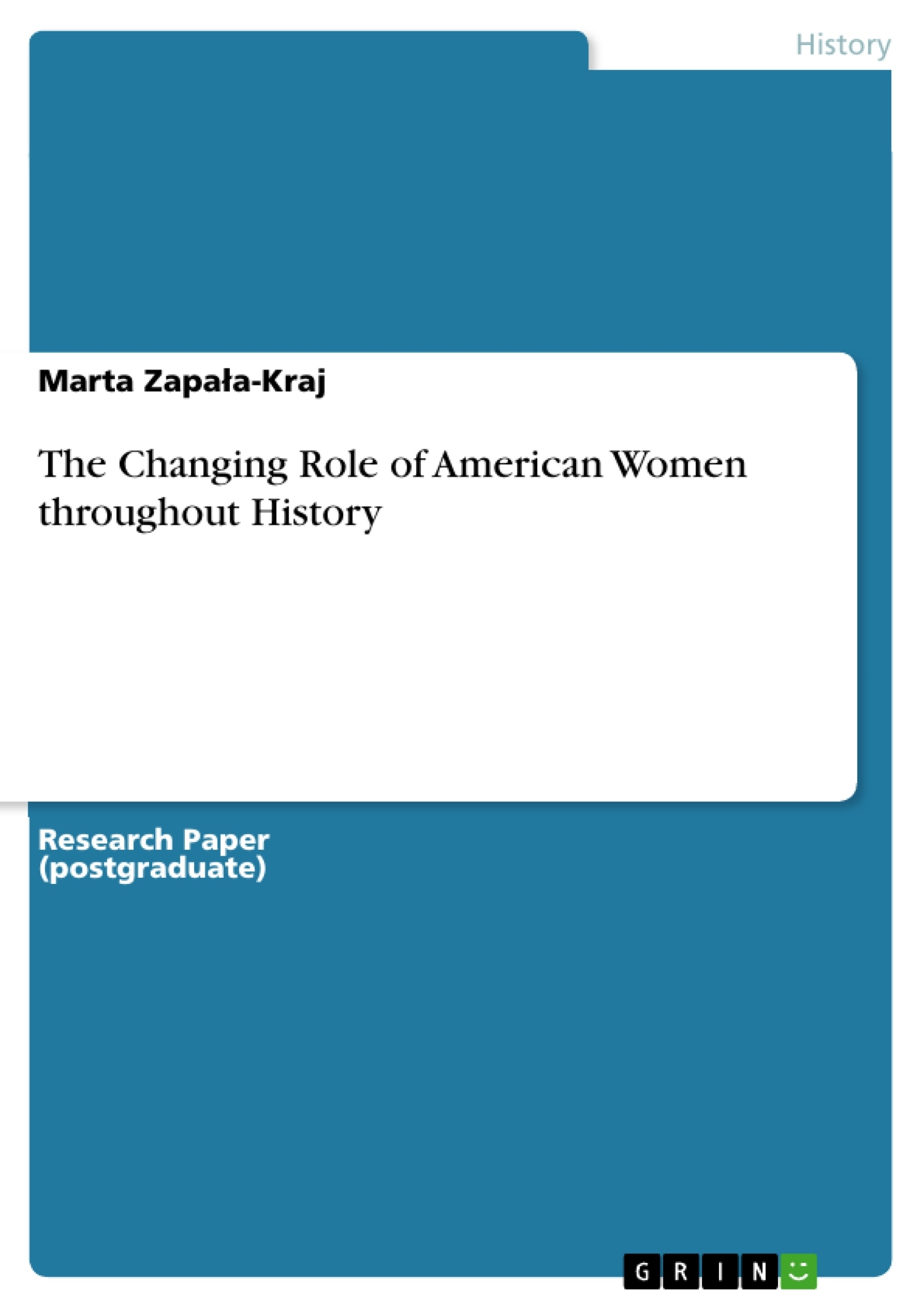Equal numbers of men and women report frequent stress in daily life, and most agree that government and businesses have failed to adjust to the changes in the family. That are the daily life realities – for most of the people, they mean that they need to struggle and remain satisfied with what they have.
As a whole, the paper was to emphasize how women are capable of developing and achieving what should rightfully be also theirs, even in the periods when women were a mere possession.
Table of Contents
- Introduction
- Women and their role – historical introduction
- Plato ancient propagator of gender equality
- Women in the Medieval times
- Thomas More's Utopia and women's rights
- Next Milestone in Women's History - Victorianism...
- Women in America – from the Beginnings to the Great Change of the Roaring Twenties
- The American Settlers' Women
- Inferior Women – Female Slaves
- A Shift to Better - the Revolution........
- Nineteen Century
- Changes between the Abolition and Civil War
- The Notable Figure of Catharine Beecher...
- The Period that Changed the American Women - 1920's..
- Flappers - the New American Women
- The Nineteenth Amendment and Further Gains of the American Women
- The American Settlers' Women
- American Women after the World War II.
- Does Law Work for Women?
- The Aspect of Abortion....
- Discreet Discrimination
- Equal Pay Act of 1963
- Feminism - the Work of Many for Many.
- Does Law Work for Women?
Objectives and Key Themes
This paper aims to analyze how women's roles have evolved throughout history, with a particular emphasis on women who immigrated to the New World. The paper explores their journey from the early colonial period to modern times. To provide a thorough understanding of the subject, the paper incorporates information about European women, as their history serves as a foundation for the experiences of those who settled in Colonial America. The key themes explored are: * **The evolving role of women throughout history:** The paper traces the changing societal expectations and rights of women from ancient Greece to the modern era. * **The influence of cultural and historical contexts on women's lives:** The paper examines how different societies and time periods shaped women's experiences and opportunities. * **The struggle for gender equality:** The paper highlights the ongoing fight for women's rights, focusing on pivotal moments and figures who contributed to progress. * **The experiences of women in the New World:** The paper specifically examines the unique challenges and achievements of women in America, from colonial times to the present day. * **The impact of legislative changes on women's lives:** The paper explores the effects of key legislation on women's rights and opportunities, such as the Equal Pay Act of 1963.Chapter Summaries
The first chapter, "Women and their role – historical introduction," provides a historical overview of women's roles and societal expectations, beginning with ancient Greece and Plato's ideas on gender equality. The chapter then delves into the Medieval period and the portrayal of women in Thomas More's Utopia. It concludes by discussing the Victorian era and its impact on women's lives. The second chapter, "Women in America – from the Beginnings to the Great Change of the Roaring Twenties," explores the experiences of women in America, from the early colonial settlements to the social and political upheavals of the 1920s. It examines the roles of women as settlers, slaves, and participants in the American Revolution. The chapter also highlights the impact of the 19th Amendment and the emergence of the "flapper" as a symbol of female empowerment. The third chapter, "American Women after the World War II," explores the progress and challenges faced by American women after the Second World War. The chapter examines the legal landscape surrounding women's rights, including the fight for abortion access and the impact of the Equal Pay Act. It concludes by discussing the ongoing struggle for gender equality and the contributions of feminist movements.Keywords
The paper focuses on the evolving roles of women throughout history, particularly in the context of American history. Key themes include gender equality, women's rights, societal expectations, historical context, cultural influences, women's suffrage, the American Revolution, the 19th Amendment, the 1920s, feminism, and the Equal Pay Act.
Excerpt out of 43 pages
- scroll top
- Quote paper
- Marta Zapała-Kraj (Author), 2014, The Changing Role of American Women throughout History, Munich, GRIN Verlag, https://www.grin.com/document/288322
Look inside the ebook



